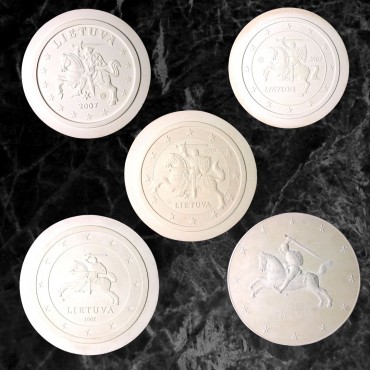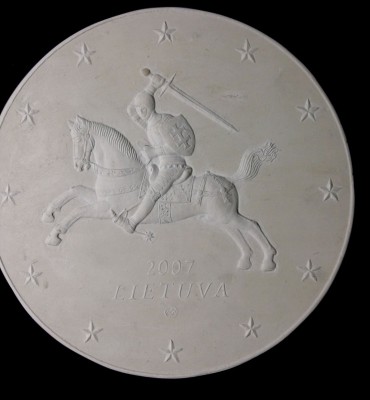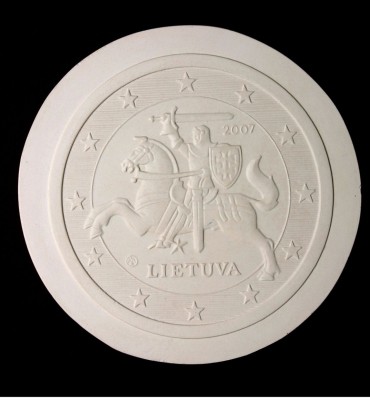On 1 January 2017 we celebrated the 15th anniversary of the first euro coins and banknotes that replaced the national currencies of 12 European countries and the 2nd anniversary of the adoption of the euro in Lithuania.
The euro in Lithuania was planned to be adopted in 2007 (unfortunately,
as the country did not fully comply with the Maastricht criteria at that
time, it was not possible). A competition to design the national side
of euro coins was announced and the most famous Lithuanian artists were
invited to try their hand in it. Before the competition, it had to be
decided what should be featured on Lithuanian euro coins. A lot of
suggestions were made, including featuring various Lithuanian
architectural objects (e.g. Gediminas Castle or St. Anne’s Church), but
it was later decided that these buildings are not well-known worldwide
and that Lithuania would be best identified by its several centuries-old
symbol – the coat of arms called Vytis. Therefore, the competition’s
conditions stated that all submitted plaster models had to feature these
compulsory elements: a modified symbol of the Vytis, inscriptions
LIETUVA and 2007, 12 stars surrounding the centre, as it was on the
coins created by the European Monetary Union’s Member States, and the
logo of the Lithuanian Mint. The competition was intended to select
three different plaster models: the first one for 1, 2 and 5 euro cent
coins, the second one – for 10, 20 and 50 euro cent coins and the third
one – for 1 and 2 euro coins. It could either be three different designs
or the same one for all of them. Some artists submitted different
designs (e.g. Petras Repšys offered a look at how the Vytis had changed
throughout the centuries. Every image was different, including positions
of the horse’s tail, sword and so on), whereas others submitted only
one common design. Five places were awarded. The winner was awarded a
prize of 40,000 litas. The winning design of the national side was
submitted by the artist Antanas Žukauskas, although it was only
implemented in 2015, when Lithuania actually adopted the euro.
In the gallery, you can see all five awarded designs, which can be found at the Money Museum’s exhibition.











